Who Is David Mazouz? Wiki, Age, Ethnicity, Girlfriend, Height, Net Worth, Career (Biographygist)
Tory Lanez Took Responsibility for ‘My Wrongs’ in Megan Thee Stallion Shooting: See the Court Transcript (Exclusive)
Harry Styles’ Former LA Home Sold for $6.7 Million by ‘Selling Sunset’ Star — See Inside! (Exclusive)
Tim Allen Net Worth in 2023 How Rich is He Now?
Mum-of-22 Sue Radford slammed as ‘distasteful & scripted’ show tricks fans into ‘thinking she has dementia’ at 49
THE matriarch of Britain’s biggest brood – Sue Radford – has been brutally criticised over a ”distasteful” episode which ”falsely lead viewers to believe she has dementia at 49”.
Mum-of-22 revealed the earth-shattering diagnosis on 22 Kids and Counting last night, January 26th.



Sue, from Morecambe, Lancashire, was seen behaving unusually quiet after she learned that one of her life-long friends had been diagnosed with the illness.
The first part of the episode showed the 49-year-old and her husband, Noel, 54, becoming more distant as the typically outgoing mum-of-22 became more withdrawn.
The pie whizz, naturally, was seen growing increasingly worried about his wife, whom he got married to in 1992.
After Noel accidentally stumbled across a leaflet for dementia in the family vehicle he feared the worst – but the latter part of the episode then revealed it wasn’t the matriarch whose life had been turned upside down.
Channel 5 viewers slammed the episode as ”distasteful” that ”set up” fans of the mega brood to believe Sue Radford had a life-changing illness.
During the episode, Noel said: ‘I’m a bit worried about Sue, she’s been really quiet today which isn’t like her. She’s always like chatty, bubbly. Doesn’t seem the usual Sue. So I’m a little bit like ‘What’s going on?’
Desperate to find out the source of her concern, the 54-year-old arranged to go for a coffee date with Sue but she failed to make an appearance.
Noel then enlisted the help of the couple’s daughter, Sophie, 31, who took Sue out for a trip to a beauty clinic in the hopes to cheer her mum up.
Meanwhile, the pie master discovered a worrying leaflet about dementia in the family’s van.
Desperate to discover the source of his wife’s low mood, Noel asked her without any hesitation: ”What’s been going on?”
Sue then apologised, before explaining what’s been bothering her.
”I am sorry, it’s been awful. But now she’s told her family, I can tell you, so… she’s got early onset dementia,” she confessed.
She then revealed the news that one of long-term friends had recently been diagnosed with the illness.
The condition which causes people to lose their memory and cognitive function, is currently the leading cause of death in the UK.
More than 70,800 people in the country are thought to have early onset dementia, and there’s currently no cure.
Symptoms can start as early as 30 – although it’s typically diagnosed much later, between the ages of 50 to 64, according to Dementia UK.
While gutted to discover the news, the husband was relieved that it it wasn’t Sue who had been diagnosed – after worrying the leaflet had been for her.
Common early symptoms of dementia
Different types of dementia can affect people differently, and everyone will experience symptoms in their own way.
However, there are some common early symptoms that may appear some time before a diagnosis of dementia. According to the NHS, these include:
- memory loss
- difficulty concentrating
- finding it hard to carry out familiar daily tasks, such as getting confused over the correct change when shopping
- struggling to follow a conversation or find the right word
- being confused about time and place
- mood changes.
Sue, who was still in total disbelief, said that their friend was her age.
”It’s really upset me, especially when she’s got youngish children as well. You don’t expect that, do you?
”You kind of think, don’t you, that it’s something you get when you’re maybe 70, 80 – it’s not something you think of in your late 40s, is it?
”It’s knocked me for six. I feel like ‘Wow, that could happen to anybody, couldn’t it?”
”It just shows you how fragile life is,” Noel reminded.
After visiting the friend, who Sue has known for years, the mother-of-22 said she was ”dealing with it all okay”.
”She’s very bubbly, a big personality and she’s not the sort of person who will let things get to her.
”But you can tell that she’s worried about it.
”If you couldn’t remember, you know, like Heidi, Bonnie, Archie, whoever’s names, it’d just be heart-breaking,” emotional Sue said.
”It’s a bit of a reality check to see ‘You know what, it can happen to anybody, can’t it?’
”You don’t know what’s around the corner.
‘Distasteful’ episode
But viewers were quick to slam the episode, dubbing it ”staged” and ”distasteful”.
One wrote: ”What a load of scripted nonsense, how can Sue just walk out and leave the children and Noel doesn’t seem to be at work.”
A second said: ”Distasteful ….wanting to make people think Sue had dementia. Scripts need looking into.”
”Wow the show is really setting this up as though Sue has dementia. She doesn’t. A family friend has early onset dementia,” a third lamented.
Another wrote: ”If it’s not all scripted then I think she’s out of order not just telling him she’s fine and it’s someone else. Poor guy must’ve been so worried! Have gone off her!”
But not everyone was so bothered by the show. One fan wrote: ”Stop with the negative comments you don’t like the programme don’t watch it simple.”
6 Alarming Reasons You Should Stop Cleaning With Bleach, Experts Say

Bleach is often synonymous with cleanliness. It famously kills 99.9 percent of germs and bacteria, including those that cause norovirus, the flu, Salmonella, and E. Coli. And there's just something about that pungent odor that screams, "I'm sanitized!" However, in most instances, you probably shouldn't be cleaning with bleach, experts say. Read on to learn the six real reasons you skip this powerful cleaner—and what to use instead.
RELATED: Doctors Say the Disinfecting Wipes You're Using Have "Significant" Health Risks.
1. Bleach can corrode tiles and hardware.
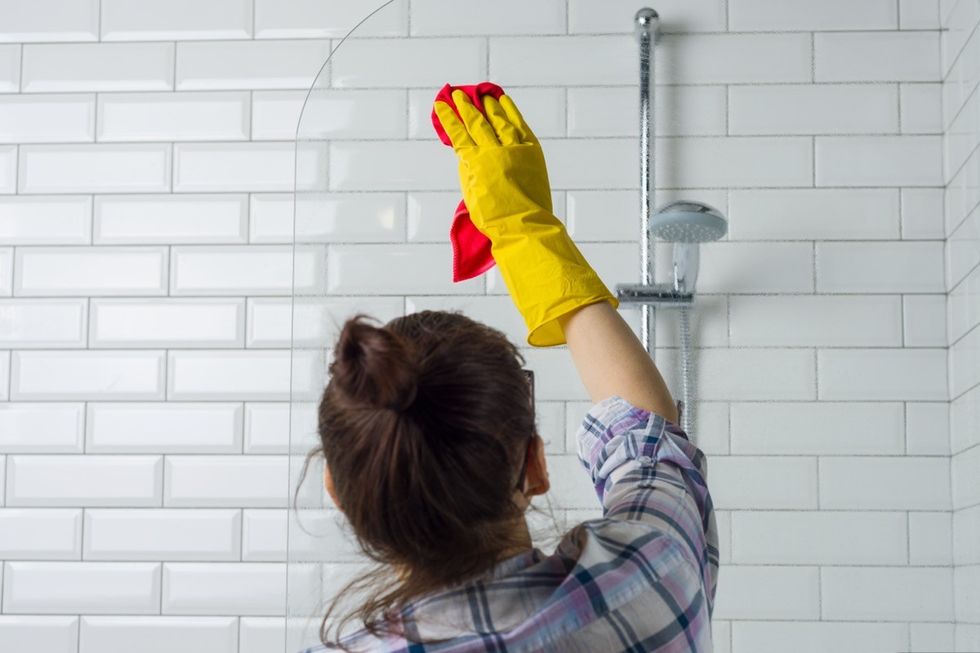
Bleach is commonly heralded as the be-all and end-all of cleaning products because it's strong—so strong, in fact, that it could corrode certain materials and fixtures in your home.
"Bleach is a powerful oxidizing substance that may discolor, deteriorate, and weaken many different types of materials due to the breakdown of their chemical structure," explains Kim Abrams, a home expert and CEO of Abrams Roofing.
For example, bleach can quickly degrade the caulk in your shower. "So if you use bleach, you need to caulk your shower every three months," points out Chris Willatt, owner of the Alpine Maids cleaning service in Denver, Colorado.
It can also eat away at shower and backsplash tiles' protective coating, "which can lead to stains and humidity issues," adds Alex Varela, general manager of the Texas-based house cleaning service Dallas Maids.
2. Bleach can damage your septic tank.
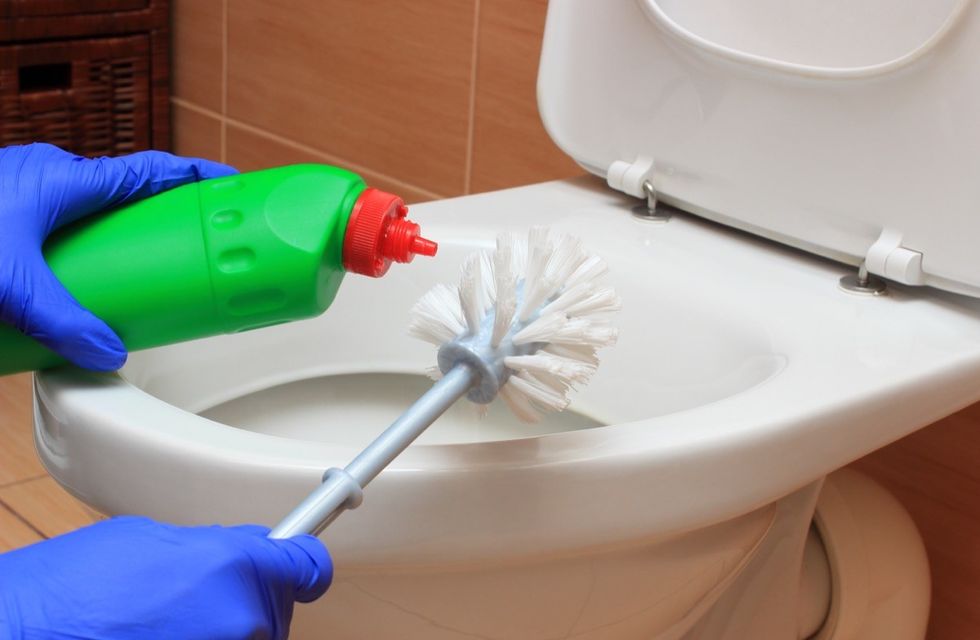
Even your toilet could get on bleach's bad side, says Melanie Musson, a home cleaning expert with Clearsurance.
"Septic tanks operate efficiently when good bacteria break contents down," she says. Putting bleach in your toilet can get in the way because it kills all bacteria—both good and bad. "So your septic system won’t work well with bleach."
3. Bleach doesn't actually kill mold.
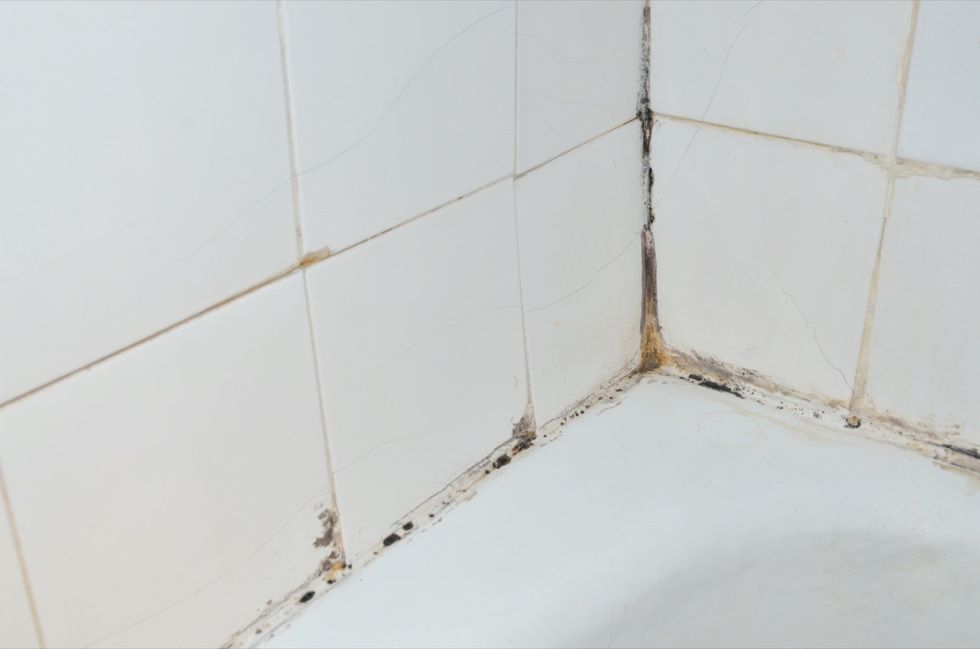
One of the biggest misconceptions about bleach is that it kills mold. Yes, cleaning with bleach will make it appear that mold has gone away, but don't be fooled, according to Torrie Thompson, DC, an expert on toxins and the founder of Meraki Wellness Center.
In a TikTok video, Thompson explains, "All bleach does is take the top layer, the colored layer, of the mold off, and the strong spores survive, so then you end up with a super mold that grows back."
4. Bleach doesn't get rid of grease and grime.
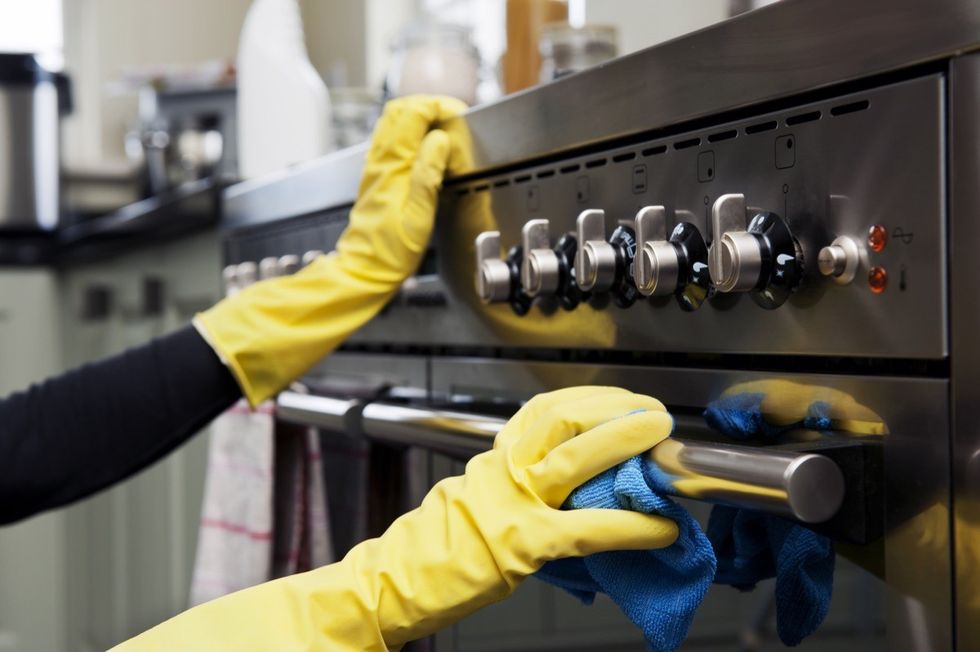
Varela points out that bleach "doesn’t have dirt-removing or grease-removing properties, which is the number one issue for regular cleaning."
This makes it especially ineffective in the kitchen, where you're likely dealing with oil splatters and food residue.
5. Bleach can cause respiratory problems.
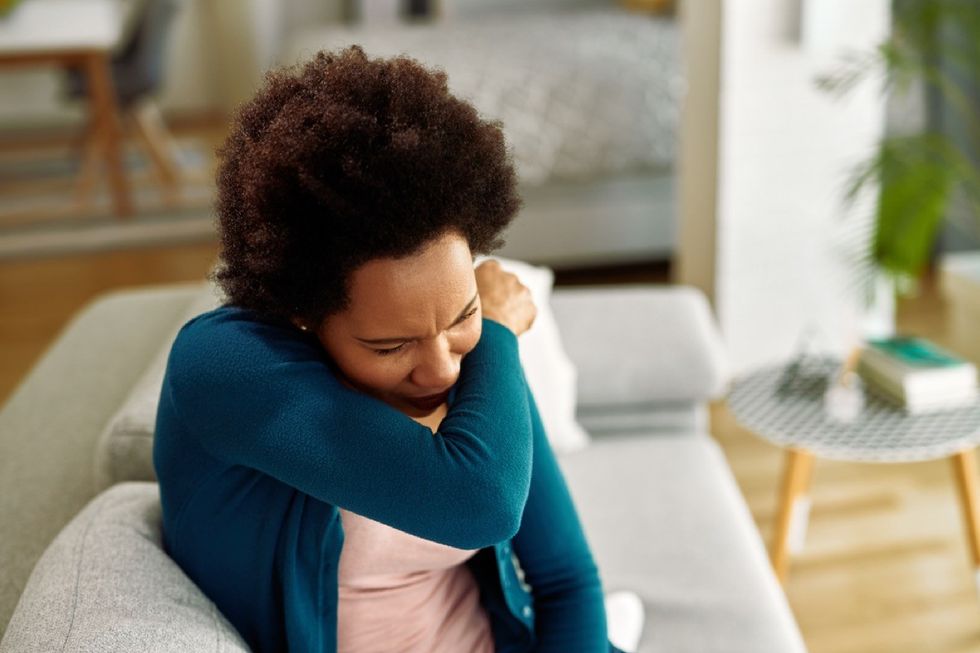
More unnerving is how bleach can affect your health.
Peter Michael, MD, health advisor and chief medical officer of VUE, previously told Best Life that bleach "can cause respiratory problems, especially when used in poorly ventilated areas."
"The fumes from bleach can irritate the eyes, nose, and throat, leading to wheezing, coughing, and shortness of breath," he explained. "Bleach can also cause chemical burns on the skin and eyes if not used properly."
This is because Bleach's active ingredient is sodium hypochlorite. As the New Jersey Department of Health notes, sodium hypochlorite is considered a hazardous substance since it can irritate and potentially damage the lungs, skin, nose, throat, and eyes.
6. Bleach can be dangerous if mixed with other cleaning products.
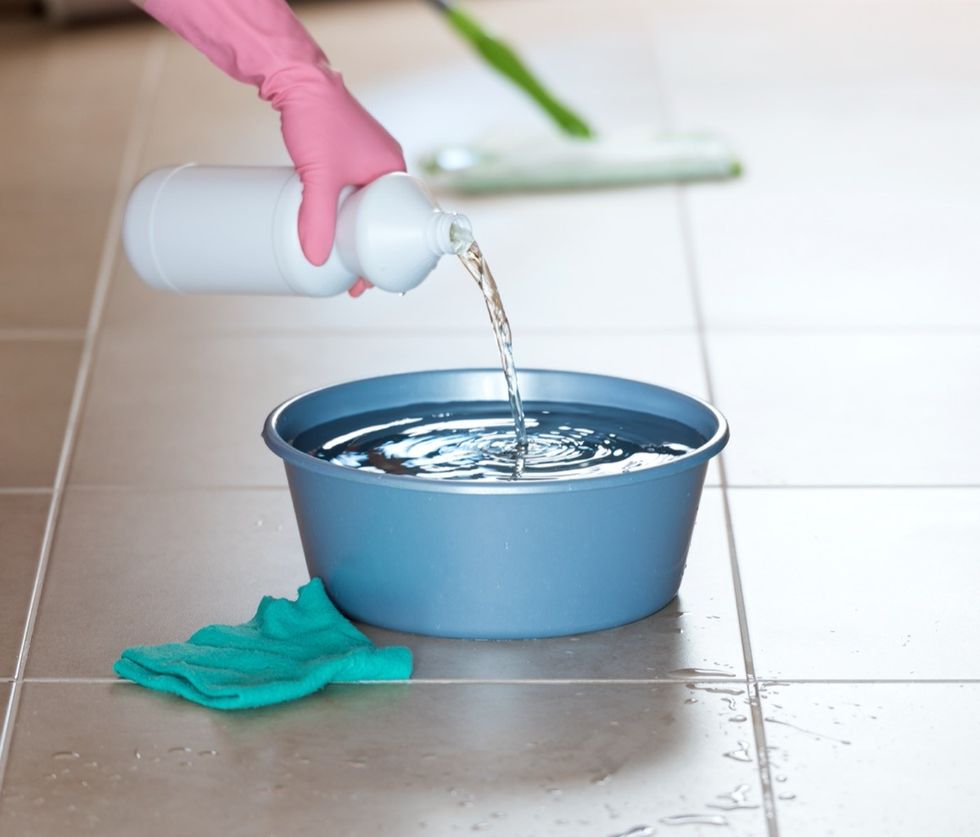
If inadvertently mixed with other cleaning products, bleach can be extremely dangerous.
The Washington State Department of Health breaks down two of the main interactions:
- Bleach and ammonia produce "toxic gases called chloramines" that can cause respiratory issues, nausea, chest pain, pneumonia, and more.
- Bleach and acids (including vinegar and many commercial cleaning products) create chlorine gas, which "almost always irritates the mucous membranes (eyes, throat, and nose), and causes coughing and breathing problems, burning and watery eyes, and a runny nose." Very high levels of exposure can even lead to death.
If you ever come in contact with one of these interactions, call 911 immediately.
Use these cleaning products instead.
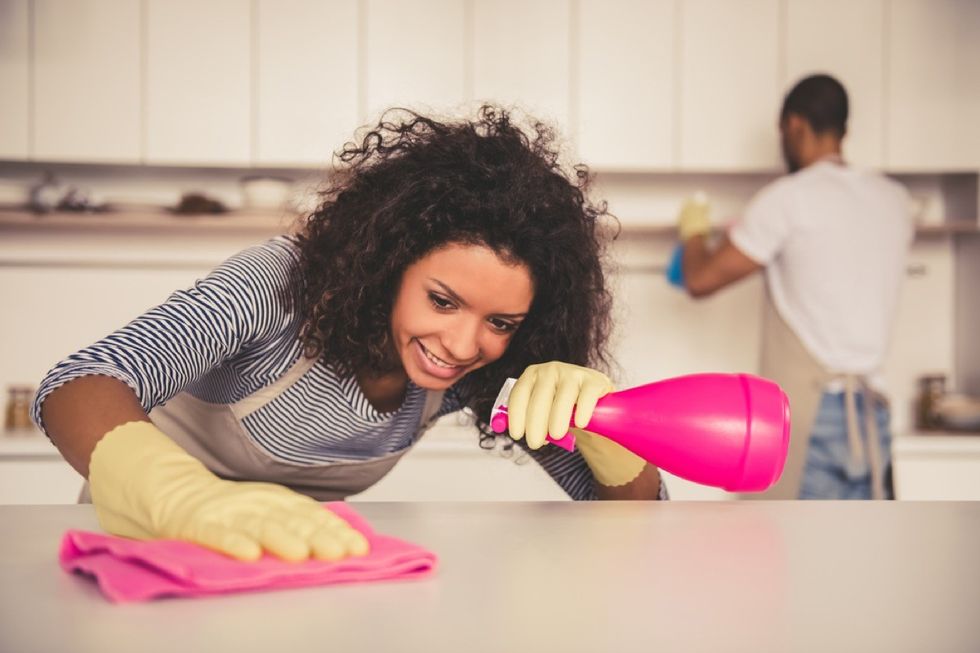
Believe it or not, according to the Centers for Disease Control and Prevention (CDC), plain old soap and hot water are usually all you need to get the job done.
"Using household cleaners that contain soap or detergent will remove germs and dirt on surfaces," they explain. "Cleaning alone removes most harmful viruses or bacteria from surfaces."
Karina Toner, the operations manager at Spekless Cleaning in Washington, D.C., says that vinegar, baking soda, or hydrogen peroxide are good bleach alternatives.
To this point, if you're looking to clean mold, Thompson recommends using distilled vinegar, which actually kills the spores.
As a preventative measure, she suggests keeping the humidity in your bathroom as low as possible, either by running the bathroom fan when you take a hot shower or using a dehumidifier.
When you should use bleach—and how to do it safely.

Bleach-based cleaners may be used if someone in your home is sick, the CDC states.
In these cases, the CDC advises first cleaning any surfaces with soap and water. Then, dilute the bleach either by following the instructions on the product or following these rules of thumb:
- 5 tablespoons (1/3 cup) of bleach per gallon of room-temperature water
- 4 teaspoons of bleach per quart of room-temperature water
Установка автономной солнечной электростанции: пошаговое руководство
Drama Tonton Langit Ke Tujuh Episode 3 TV3
Watch Langit Ke Tujuh Episod 3 Latest on Astro Ria via Kepala Bergetar the latest Malay drama in HD on myflm4u or DFM2U. Kbergetar Malaysia Drama Langit Ke Tujuh Live Epi 3 Video. Langit Ke Tujuh Episod 3 tonton drama video online.
The post Drama Tonton Langit Ke Tujuh Episode 3 TV3 first appeared on Kepalabergetar.
Antara Dua Syurga Episod 9 TV3 Tonton Online
Watch Antara Dua Syurga Episod 9 Latest on Astro Ria via Kepala Bergetar the latest Malay drama in HD on myflm4u or DFM2U. Kbergetar Malaysia Drama Antara Dua Syurga Live Epi 9 Video. Antara Dua Syurga Episod 9 tonton drama video online.
The post Antara Dua Syurga Episod 9 TV3 Tonton Online first appeared on Kepalabergetar.
